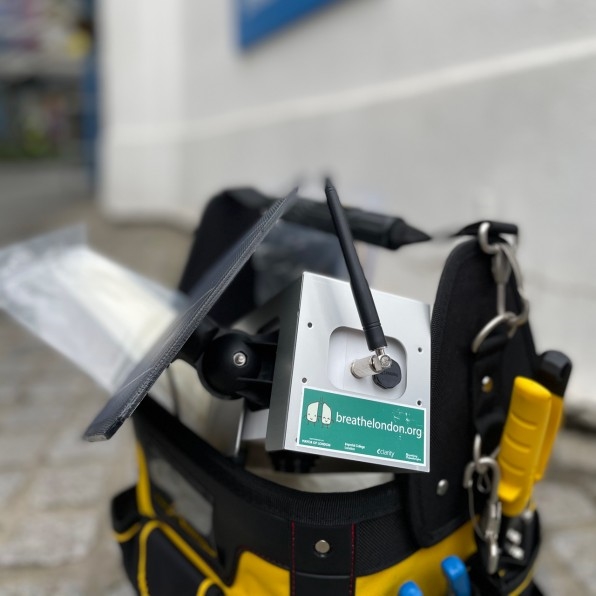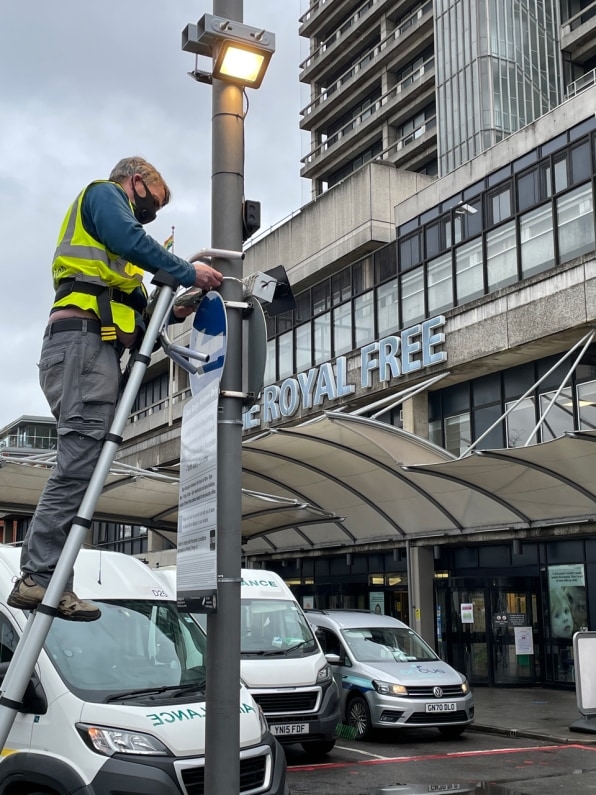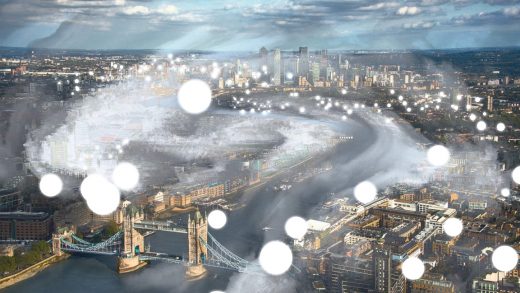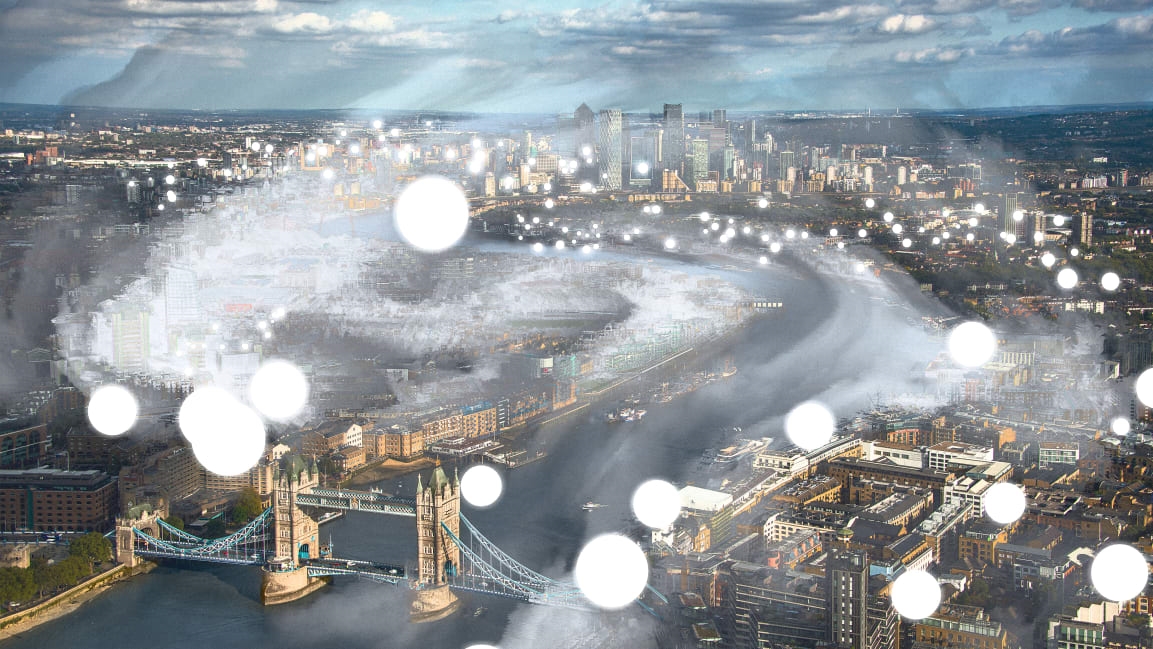London’s poorest neighborhoods have deadly pollution levels. These new sensors will explain why
In 2013, 9-year-old Ella Adoo-Kissi-Debrah died after suffering for years from severe asthma attacks. In the years following, inquests into the death of the young girl, who’d lived in the southeast London borough of Lewisham, found that the cause of death was air pollution from the South Circular Road, a nearby major thoroughfare. She became the first person ever in the U.K. to have their cause of death officially listed as “air pollution.”
Ella’s death, the coroner’s report, and commissioned studies that followed, sparked greater attention to air pollution in Britain’s capital, and especially to its disproportionate impact on low-income and minority communities. In an effort to improve, and democratize, the gathering of air pollution data, a project funded by the mayor of London—and by billionaire former New York Mayor Michael Bloomberg—is installing air quality sensors in communities around the city, with special focus on poorer communities, in the hope that the data can influence local policy changes.
The Environmental Research Group at Imperial College runs the London Air Quality Network (LAQN), a collection of air pollution monitoring stations in London and southeast England first established in the 1990s. The group has grown to include a team of epidemiologists, lung toxicologists, policy experts, and others who track and study the data. But its complex infrastructure, made up of bulky and expensive sensors, has proven a difficult system to replicate elsewhere.

In response, London Mayor Sadiq Khan, with funding from C40, a global network of mayors fighting climate change, established the Breathe London network to show that it’s possible to increase air quality measurement in all parts of the city by providing cheaper, smaller, easier-to-install sensors to anyone who wants them. This community- and citizen-led monitoring model is a relatively new concept, says Andrew Grieve, senior air quality analyst with Imperial and LAQN.
These newer sensors are solar-powered and about the size of a shoebox, and can easily be attached to lampposts, traffic lights, roofs of homes or businesses, and in places like playgrounds, allotments, and residential areas. Made by California company Clarity, the sensors are coated with a chemical that reacts with pollutant particles, producing a tiny electrical current that is then magnified, and the strength of the voltage suggests the volume of pollution in the air. But the system can be affected by conditions such as temperature and humidity, and therefore is less accurate than the LAQN’s traditional sensors. So, the Breathe team syncs the nodes up to LAQN’s already established sensors to ensure accuracy. Imperial’s scientists study the data every day in real time, and correct the monitors if they are off.
Because they’re compact and easy to install, they can be used by individual citizens and communities. “It opens up new possibilities for monitoring,” Grieve says. “We are now able to monitor in places we never could have with a reference station.” Breathe started as a pilot, where the Greater London Authority gave sensors to 30 schools and 10 hospitals, from the most to the least polluted areas of the city. Now the sensors are available via online purchase to any group or person with funding. For instance, a partnership of five boroughs in southwest London have bought 140 to place in schools, playgrounds, and roads. “My sense is that having an air quality monitor in your kid’s playground, or on your street,” Grieve says, “is potentially a much more powerful way of people feeling directly connected to the air quality in their area.”

Without funding, though, the nodes are still expensive, at just less than 2,000 pounds ($2,600). So, over the next three years, Breathe is providing 60 free ones, donated by Bloomberg’s charitable organization, Bloomberg Philanthropies, as part of his 720,000-pound ($1 million) investment. Breathe will be taking applications for those 60—the first round, for the first year’s allocation of 10, ends this week—and is looking preferably for community groups, like residence associations or parent-teacher associations, rather than individuals, and for defined and achievable outcomes. Most crucially, it’s favoring socioeconomically deprived communities, which have a higher prevalence of pollution and “haven’t been involved in the air quality conversation yet,” Grieve says.
Since Ella’s death, her mother, Rosamund Kissi-Debrah, has become an activist, pushing for awareness and change around air quality. Her work helped influence the commissioning of two studies from the city council; the latest, from 2017, found that in areas of the poorest air quality, 32% of people are from the most socioeconomically deprived groups, and 7% from the least deprived. And, areas with high populations of Black and other ethnic people are “more likely to have nitrogen dioxide concentrations above the EU recommended limit than areas with a high proportion of white people.”
In an effort to encourage applications from those areas, Grieve, who’s running the process, has launched an online awareness campaign, and has been dropping off leaflets by hand in the five boroughs that the reports showed have the highest levels of air pollution and economic deprivation: Barking and Dagenham, Newham, Tower Hamlets, Croydon, and Hackney.
Grieve imagines the data collection could eventually result in local policy shifts, like getting authorities to add new school routes, reduce idling, or build new parks. Already, 70 purchased sensors have been synced with cameras from Vivacity Labs, which captures road data, in an effort to find trends between traffic and pollution data. Bloomberg also purchased four sensors for cultural institutions, including the British Library and the National Gallery, to explore how they can communicate air quality information to visitors.
But Grieve is deliberately stopping short of citing desired policy outcomes. He wants communities to identify their own desired outcomes for themselves, without his bias, which is the crux of the citizen-led approach. “London’s a big place,” he says. “There will be groups out there that will approach things in a way that we have never thought of. We’re excited to see what people do with it.”
Fast Company , Read Full Story
(26)



